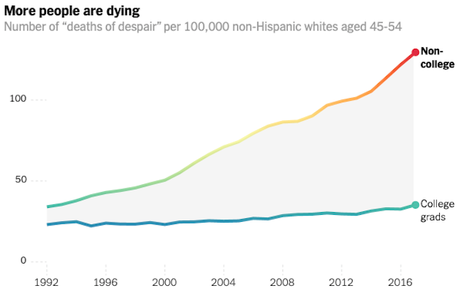
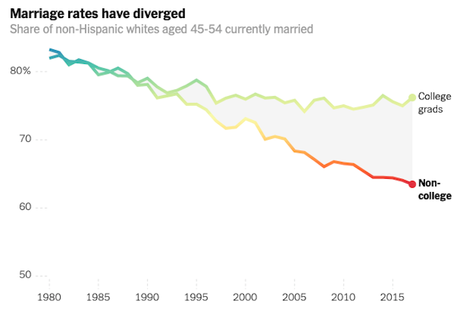
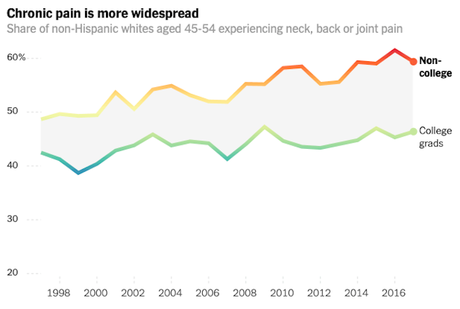
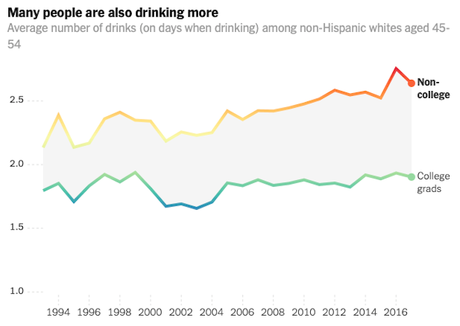
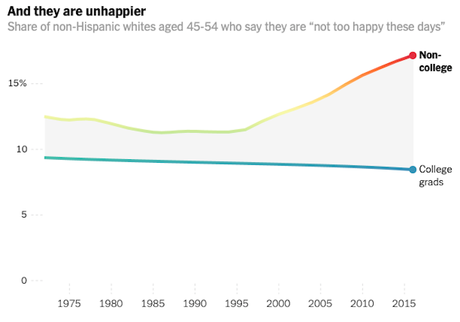
I found this article by David Leonhardt and Stuart A. Thompson in The New York Times to be rather shocking. It seems that working class individuals face a more dangerous life than others. Here is just a part of that article:
When the economists Anne Case and Angus Deaton first published their research on “deaths of despair” five years ago, they focused on middle-aged whites. So many white working-class Americans in their 40s and 50s were dying of suicide, alcoholism and drug abuse that the overall mortality rate for the age group was no longer falling – a rare and shocking pattern in a modern society.
But as Case and Deaton continued digging into the data, it became clear that the grim trends didn’t apply only to middle-aged whites. Up and down the age spectrum, deaths of despair have been surging for people without a four-year college degree.
Case and Deaton — a married couple who are both economists at Princeton — try to explain the causes in a new book, “Deaths of Despair and the Future of Capitalism.” Their basic answer is that working-class life in the United States is more difficult than it is in any other high-income country. “European countries have faced the same kind of technological change we have, and they’re not seeing the people killing themselves with guns or drugs or alcohol,” Case says. “There is something unique about the way the U.S. is handling this.”
Inequality has risen more in the United States — and middle-class incomes have stagnated more severely — than in France, Germany, Japan or elsewhere. Large corporations have increasedtheir market share, and labor unions have shriveled, leaving workers with little bargaining power. Outsourcing has become the norm, which means that executives often see low-wage workers not as colleagues but as expenses.
And the United States suffers from by far the world’s most expensive health-care system. It acts as a tax on workers and drains resources that could otherwise be spent on schools, day care, roads, public transit and more. Despite its unparalleled spending, the American medical system also fails to keep many people healthy. . . .
Many of the problems afflicting the working class span racial groups, and Case and Deaton emphasize that these problems aren’t merely financial. Life for many middle- and low-income Americans can lack structure, status and meaning. People don’t always knowwhat days or hours they will be working the following week. They often don’t officially work for the company where they spend their days, which robs them of the pride that comes from being part of a shared enterprise. . . .
The result of these trends has been a “coming apart,” as Case and Deaton put it, of day-to-day life for whites without a college degree versus those with a college degree.
Surveys show that a growing number of working-class Americans find it difficult to do basic things, like climb a flight of stairs or socialize, partly because of chronic problems with their mental or physical health.
Given all of these alarming social indicators, it’s not surprising that some other causes of death — in addition to suicide, alcoholism and drug overdose — have also started rising for Americans without a college degree. Heart disease is the most significant, exacerbated by obesity, drinking and drug use.
The combined result is a divergence in the life expectancy of white college graduates and non-graduates. Overall mortality for whites between the ages of 45 and 54 has held roughly steady in the last 25 years. But that average hides a big increase in death rates for non-graduates and a big decline for graduates.

